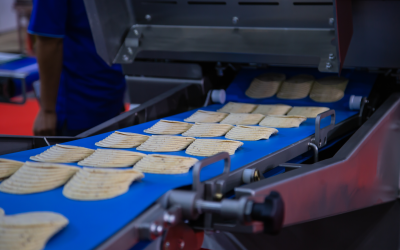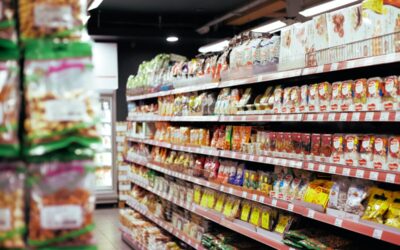Some consumers…we don’t know how many, but it’s substantial, prefer to purchase and consume “Feel Good” foods. They justify their selections using one or more of the following: “It’s good for x,” where x equals “my neighbors,” “the community,” “the animals,” “the environment,” or “me”. It’s seldom good for your wallet or purse; so it’s expected to be good for something else. A study conducted by the National Pork Board determined that 23% of US consumers are willing to pay more for meat if it is locally sourced.1 Small-scale, underlying motivation of the “locavore movement” wherein consumers believe they are contributing to the world with lower climate-change impact or less animal cruelty.2
Some of the Locavores want to “Feel Good”; many want to buy Local foods solely because they dislike “industrial agriculture” (activists call it “factory farming”).3 Magic Pill®, a Netflix documentary, says, “If you want to reduce your carbon footprint, one of the best things you can do is eat locally and grow your own food in your own backyard.”4 Good idea, but you better have a very large yard if you expect to have fruits and vegetables and fish and beef and eggs and milk and peanuts and tree nuts. People who believe that Local beef production is sustainable (i.e., in regard to making sure that everybody has enough to eat) don’t realize that to produce the same amount of meat, you would have to increase the number of animals being raised.5 Beef-lovers in Wyoming want to buy meat identified as “Locally Produced and Wyoming-Raised” and now can do so.6 Kentucky Cattlemen’s Association claims that their locally grown and marketed beef is produced by farm families who share a commitment to good animal care and the environment.7 That’s undoubtedly true but certainly not unique. A quick-service restaurant chain rolled out a television ad saying it “only used fresh beef…from ranches nearby.” They pulled it back a few days later perhaps because they could be asked, “From what ranch nearby New York City…or Boston…or Anchorage did your company source their beef?”8
Is buying Local food good for my neighbors and the community in which I live? Probably. It allows some small-scale producers to survive financially.9 Especially if you can charge enough for it…like $7.99 a dozen for Local eggs when a dozen conventional eggs sells for $1.65.10 But that doesn’t help the community because it’s your neighbors who are paying for the higher-priced product. Consumer demand for locally produced food can be driven by demand for freshness, support for the local community, and personal communication with the producer11 but perhaps—as the grower—you wouldn’t want the end-user to know it was you who benefited from the transaction. Nevertheless, a Harris Poll™ says consumers still rank “support for the local economy” highest among reasons for choosing local food.12
During the Obama Administration, the USDA poured millions of dollars into support of Local, direct-to-consumer (DTC), food marketing, but by 2015 DTC sales were declining.12 When selling “Locally,” DTC marketing strategies include farmers’ markets, farm stands, on-farm sales, pick-your-own operations, and community-supported agriculture; less than 3% of farm sales are DTC.13 Participation in community Farmers’ Markets resulted in 71% of farmers saying they achieved higher profits if they sold their products in local markets; participants valued highest (as being most beneficial to them) the Farmers’ Market venue for its ability to give them a better sense of what the consumer really wanted to purchase.14 So, it really depends on whether you are the producer of the purchaser; it really “Feels Good” if you’re paid more than something’s worth…not so much if you’re the buyer. Nevertheless, there were 8,260 Farmers’ Markets in the US in 2014, and more than 4,300 farm-to-school programs purchased $385 million of Local food.15
An A.T. Kearney™ survey found that 93% of all shoppers associate “Local” with “fresh,”16 which is the primary purchase-decision factor for grocery shoppers; but that is not categorically correct. Others, convinced by USDA in 2008-2016, came to believe that shopping locally lowered carbon emissions; but that too is not always the case. The latter belief was based on the premise that Local food helps prevent climate change by minimizing GHGs from fossil fuels associated with “food miles”. Problem is: the term “Local” has no universal meaning, and some people want to expand it to include regional, or state, or even border (US Vs. Mexico or Canada).12 USDA defines “Local” as a measurable distance between food production and consumption that is 400 or fewer miles13; most retailers use that as their gold standard.17 The state of California allows vegetables from Mexico, and bananas from Malaysia, to qualify as “Local” for their school lunch program if the school buys them from companies that have a distribution center in California.18 A purveyor in Colorado says “Local has gone loco”; there are no chicken processors in his state, yet a competitor buys chicken from a plant in Georgia, repackages it in bags labeled “Processed In Denver, Colorado,” and retailers sell it as “Local”. When that was revealed to a supermarketer operator, he said, “I don’t care where the product was made so long as the package say’s it’s prepared or packed in Colorado.”19 Environmental sustainability of purchasing only locally grown food has been clarified; for example, the most environmentally friendly form of egg transport form source to home is that of purchasing a dozen eggs from a grocery store—unless you bought 17 dozen eggs on each visit to a local poultry farm.20
Relative to “It’s good for the animals,” that’s a myth believed only by activists searching for a reason to criticize industrial farming. No one could possibly believe that animal caretakers “nearby” are the only ones compassionate enough to care about the health and well-being of their animals. No one could possibly claim that only small-scale or Local farmers and ranchers protect their farm animals from; (a) shortages of feed, water, and healthcare; (b) the vagaries of extreme weather events; and (c) harm or death from predators. There’s plenty of evidence to the contrary. Consumers often don’t realize that a “Local” label-claim doesn’t mean anything at all about animal welfare; it certainly doesn’t preclude mistreatment of animals.21 Production systems that allow free-range exposure allow direct contact between domesticated and wild animals, and their feces.22 USDA’s Farm Service Administration paid $2.2 million to a Georgia-based “Pasture-Raised” poultry farm to compensate for bald eagle attacks that killed 160,000 chickens.23 Farmers originally moved from “Free-Range” and “Group-Housing” in order to improve welfare (lessening broken breast bones and higher mortality due to “pecking order”).24
What about “It’s good for me”? A restaurant company claims, “The health benefits of eating locally are tremendous; fruits, vegetables, and meat that have been processed and picked in a recent time-frame have a higher nutrient density versus those that travel across the country”.17 Absolute nonsense. Foods that contain water become higher in nutrient density as the time between harvest and consumption increases— because they “dry out” more. Nutritional composition of animal-based foods is more reflective of what an animal eats than the type of production system that is followed.25 Power Of Meat 2019 revealed that meat/poultry consumers tie back livestock-raising practices to their own health, even more so than having benefits for the welfare of the animal.26 FDA now allows tens of thousands of small farmers to be exempt from the Food Safety Modernization Act regulations saying “products from Local farms are safer”.27 Recent recalls of raw organic milk, organic eggs, and organic poultry—all from small-scale producers—show clearly that consumer expectations are not being met.27 Any production system that allows outdoor access to farm animals has a negative effect on food safety—increasing risk of prevalence of infections by viruses, bacteria, and parasites.28
The Coronavirus pandemic revealed that there is a severe shortage of meat processing capacity encouraging numerous journalists to suggest that the USA needs to build more locally owned small-scale slaughtering and processing facilities.29 But, with regard to food safety, there is substantial evidence that if animals are not harvested and processed under FDA, USDA, or Food Code supervision, their meat is less safe. Those in the consuming public seldom hear about foodborne illnesses associated with production of meat on farms and ranches or at locker plants because most of those sicknesses are classified as “incidents” rather than “outbreaks” inasmuch as so few people are affected.30 A six-year scientific study of “Safety Of Meat To Size Of Processing Plants” identified substantial deficiencies in food safety practices at small and very small plants.30 Senator John Tester (D-MT) has argued in Congress that dangerous foodborne outbreaks don’t start with family agriculture27 but Auburn University surveyed food safety of locally produced foods and found it wanting.31 They’ve started a statewide butchery course to train small-scale processors on sanitary facility design as well as safe preparation and handling.31
The advantages associated with producing food locally don’t include food safety, nutritional value, or sustainability; so, its popularity must depend on its ability to satisfy someone’s philosophical ideology regarding freshness, supporting the local community’s economy, or avoiding purchase of products from a large-scale operation.32 “Local” continues to appear among “Top Ten Food Trends”33 and “2020 Power Of Meat”34 because of its capacity to generate a “Feel Good” mindset for a niche subset of consumers. Any other perceived added advantage is so subtle as to be immeasurable. I believe that, if there is a market for any reasonable food product, the industry should produce some of it—but not at the expense of any other product generated within the industry.
REFERENCES:
1 National Pork Board. October 2019.
2 Graves, Mack. Meatingplace. May 12, 2016.
3 Coclanis, Peter. The Wall Street Journal. August 28, 2015.
4 Gedgaudas and Keith. Netflix™. 2017.
5 McWilliams, James. NAFB News Service. September 2009.
6 Krut, Steve. Meat + Poultry, September 9, 2020.
7 National Cattlemen. April 2018.
8 Smith, Gary. Texas A&M University. December 2016.
9 Martinko, Katherine. Sustainable Agriculture. February 2015.
10 Gigot, Betty Jo. CALF News. November 2019.
11 Low and Vogel. Prepared Foods. February 2012.
12 Reetz, Alan. The Packer. July 29, 2019.
13 Webb, Megan. CALF News, September 2020.
14 New Jersey Community Farmers’ Markets. August 2009.
15 Harden, Krista. The Modesto Bee. March 2015.
16 Johnston, Tom. Meatingplace. April 20, 2016.
17 Jones, Amber. Insite. March 2019.
18 Meatingplace. January 2015.
19 Bloom, Greg. Meatingplace. August 13, 2020.
20 Capper, Jude. Washington State University. 2011.
21 Hopkinson, Jenny. Politico. April 8, 2015.
22 International Poultry Production. 12 (2): 4-9. 2004.
23 Raymond, Richard. Meatingplace. October 8, 2018.
24 National Association Of Egg Farmers. July 18, 2018.
25 Kelly, Susan. Meatingplace. July 19, 2018.
26 North American Meat Insitute. March 6, 2019.
27 Kochak, Jacqueline. Food Safety Magazine. May 2015.
28 Kijlstra et al. J. Food Protection. 72:2629-2637.2008.
29 Pharo, Kit. Pharo Cattle Company. August 12, 2020.
30 Cates et al. Journal of Food Production. 28:26-36. 2008.
31 Smith, Maggie. Bovine Veterinarian. July 26, 2018.
32 Abend, Lisa. TIME Magazine. January 25, 2020.
33 Sloan, Elizabeth. Food Technology. April 2018.
34 Roerink, Anne-Marie. 210 Analytics, March 15, 2020.



